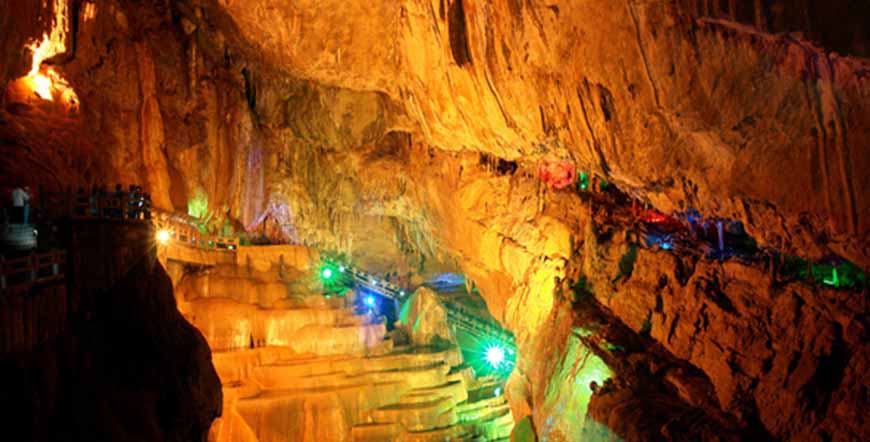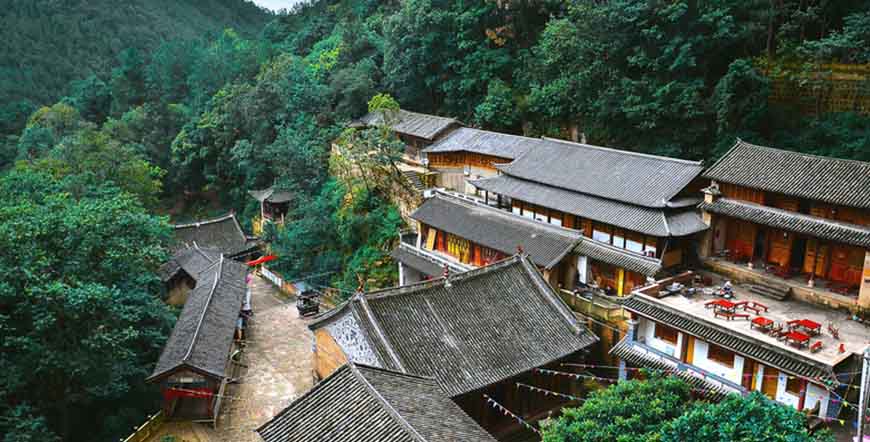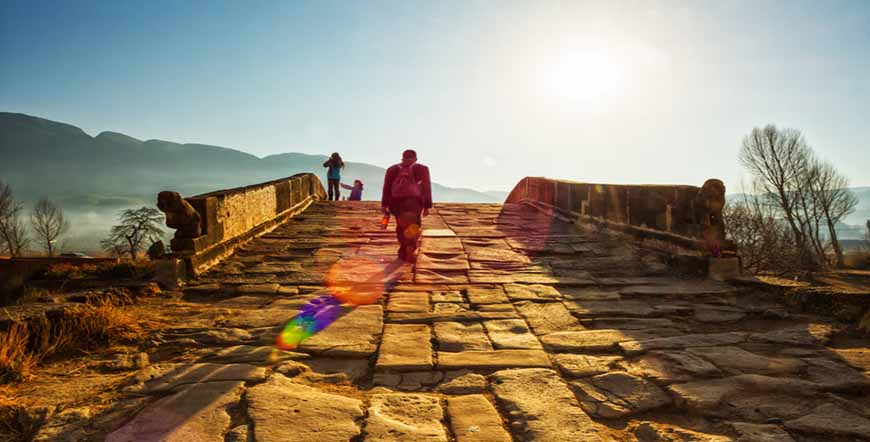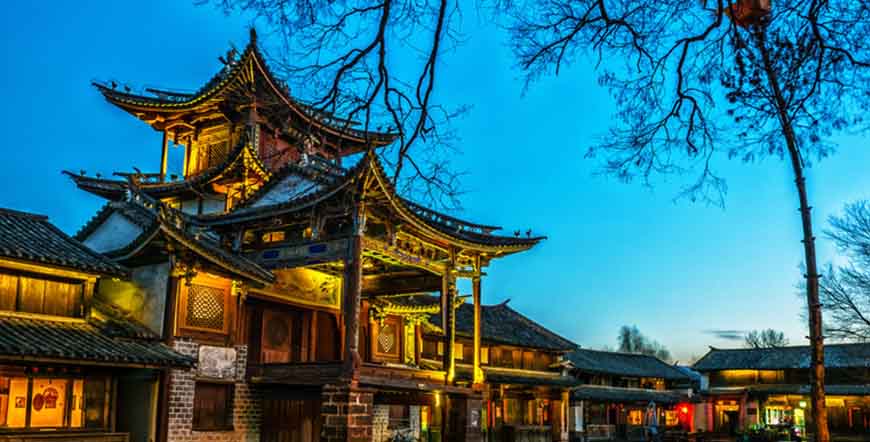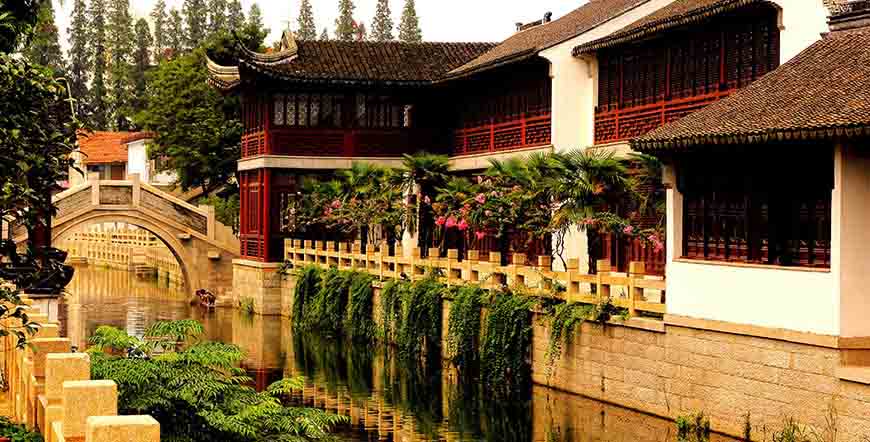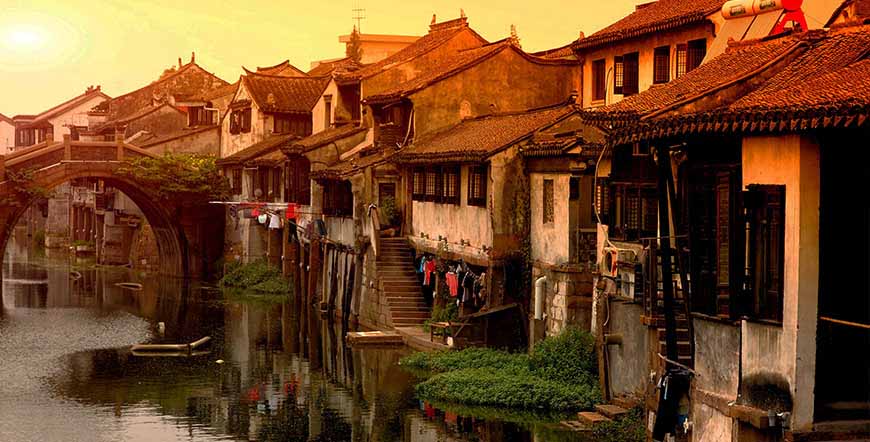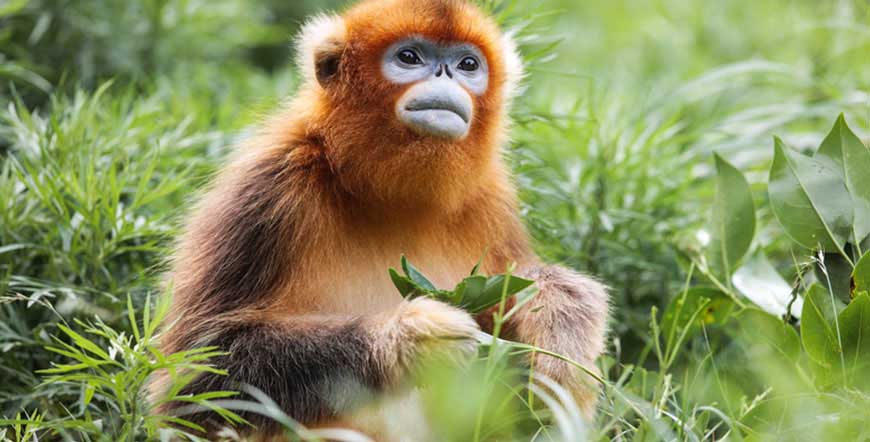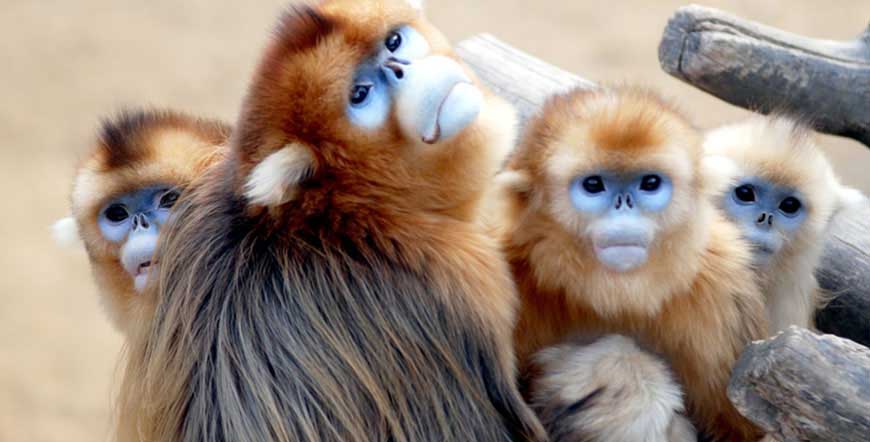General Information About Rome
Going Deep into the Three Parallel Rivers Region
Day 1: Kunming airport-Hotel(28KM)
Kunming arrival. Upon your arrival in Kunming, your English-speaking guide and private vehicle will pick you up at the airport and send to your hotel. And the rest of the day will be on your own. Overnight in Kunming.
Meal:None
Accommodation:Kunming Jinjiang Abuilding Hotel (4-star)
Major Attractions:
Day 2: Kunming-Stone Forest(78KM)-Jiuxiang Karst Cave
Today you will spend the whole day visiting Stone Forest and Jiuxiang Karst Cave which are about 78 kilometers away from Kunming. The driving time will be about 1.5 hours for a single way. In the evening, if you don’t know how to spend your time, we strongly suggest you watch the Yunnan Impression Show which starts at 8 p.m and lasts for 110 minutes. Overnight in Kunming.
The Stone Forest
One of the world 's most stunning natural creations. It is just southeast of Kunming in Shilin County. It is only a three hour drive from Kunming and is commonly said that a visit there without visiting the stone forest is "a waste time". The Stone Forest is made up of countless awesome natural rock formations that will truly boggle your mind.
Jiu Xiang Scenic Area
40 kilometers from Kunming, Jiu Xiang Scenic Area covers a total area of 172 square kilometers. The karst cave cluster found here is the largest of its kind on the Yunnan-Guizhou Plateau. Visitors to Jiu Xiang will find themselves in a labyrinth since there are smaller caves, rivers and halls inside big caves, and that the stalactites and stalagmites in the caves present all kinds of strange shapes.
Yunnan Impression Show
Also called Dynamic Yunnan, is a grand and unique dance musical that richly depicts the strong flavor of the life of ethnic minorities in Southwest China. It tells audience about the universe, nature, culture, the pursuit for the origins of life, the praise of life and the wish for everlasting life.
Meal:B;L;D
Accommodation:Jinjiang Abuilding Hotel (4-star)
Major Attractions:Stone Forest,Jiuxiang Karst Cave,Yunnan Impression Show
Day 3: Kunming- Dali- Shaxi Ancient Town
Take the morning flight to Dali. Upon your arrival, your personal guide and vehicle will pick your at the airport and drive you to Shaxi ancient town. It is about 150 km and 2.5 hours’ driving. When you have arrived, take around this small and quiet old town and buy some food material and learn the Chinese cooking in a local farmhouse.
Overnight in Shaxi.
Meal:B;L;D
Accommodation:Laomadian Lodge. (Boutique hotel )
Major Attractions:Shaxi ancient town,learn the Chinese cooking
Day 4: Shaxi- Mapingguan
Hiking from Shaxi to Mapingguan along the Ancient Tea Horse Road. This trip will be about 15 km and will take about 5 hours.
Overnight in Mapingguan local guesthouse
Mapingguan Village (15km southwest from Sideng village). Located between Shaxi Valley and the three major Dianxi salt wells to the west, Mapingguan was an important checkpost during the time of the Tea & Horse Caravan Trail where the government collected tax on the salt trade
Meal:B;L;D
Accommodation:Mapingguan local guesthouse. (local family )
Major Attractions:Mapingguan Ancient Tea Horse Road
Day 5: Mapingguan- Shaxi
Today you will Hiking from Mapingguan to Shaxi.
Overnight in Shaxi.
Meal:B;L;D
Accommodation:Laomadian Lodge. (Boutique hotel)
Major Attractions: Shaxi local markt
Day 6: Shaxi- Tacheng
Today you will take a full day driving to Tacheng which is about 220 km and the driving time will be about 5 hours. On the way you may have some time to visit the local villages and enjoy the beautiful scenery of the highland. Overnight in Tacheng.
Meal:B;L;D
Accommodation:TachengShenchuan Hotel. (3 star)
Major Attractions:Tachenglocal villages
Day 7: Tacheng- Cizhong
In the morning drive to Yunnan snub-nose monkey National Park and take a close look at these lovely animals which are as precious as giant panders. Then drive to Tongle to visit a Lisu MinorityTongle village and Kangpushouguo Temple. Overnight in Cizhong
Baimang Snow-capped Mountain located at Deqen County the mountain is a National Nature Reserve. The golden monkeys of Yunnan, first-class animal protected by the state, inhabit in the mountain and it is also the kingdom of azalea. The alpine azalea forest of Baimang Snow-capped Mountain is appraised as one of the ten most beautiful forests in China.
The TongLe village of in Weixi CountyYunnan Province, is a typical Lisu village in the Langcang River Basin. It is located at the national protection zone of traditional culture of Lisupeople and is named an ecological cultural village by UNESCO.
Shouguo Temple in Kangpu is the best preserved temple in Diqing area. Owing to the distant position, it has little damage during the Cultural Revolution. And the temple combines the elements of Daoism, Tibetan Buddhism and Chinese Buddhism together with peculiar constructions, colorful murals and various paintings on the glazed tiles. It has a big influence in ancient China that lots of monks from all over the China are attracted here.
Meal:B;L;D
Accommodation:CizhongJitaoGh. (local Gh)
Major Attractions:snub-nose monkey National Park, Lisu Minority Tonglevillage,Kangpushouguo Temple
Day 8: Cizhong- Deqin
In the morning visit Cizhong Catholic Church which was built in 1900, and take a visit to a Tibetan family in the village. Then drive to Deqin. On the way you will have a chance to overview the beautiful valley of Lancangjiang River and at last you will be arrived in FeilaiTemple in Deqin. Overnight inDeqin.
Cizhong Catholic Church First built in 1867 and rebuilt in 1909, the Cizhong Catholic Church is a model which combines the architecture features of both western countries and China's Tibet, Han and Bai ethnic groups. The church and its wing-room, gate, cellar and grape yard were well preserved by local government. It was listed as the key national cultural protection relics by the State Council in 2006.
Tibetan villageWith a population of 112 thousand people, the Tibetan minority takes up one third of the total in Diqing Tibetan Autonomous Prefecture. They believe in Lamaism, a major branch of Buddhism. During the new year on Tibetan calendar and the horse racing festival on the fifth day of the fifth month on Chinese lunar calendar, there are big gatherings of Tibetans in Zhongdian, Deqin and Weixi celebrating the festivals.
Meal:B;L;D
Accommodation:DeqinGuanjingtiantang Hotel. (4star)
Major Attractions:Cizhong Catholic Church,Tibetan family,
Lancangjiang River
Day 9: Deqin
Get an early up to enjoy the splendid sunrise at Feilai Temple and watch the sunshine reflected on the peaks of Meili in front of you. Then go hiking in Mingyong Glacier and on the way visit the nearby Tibetan villages. Overnight in DeqinGuanjingtiantang Hotel.
Mingyong Glacier An extremely long ice under the KawakarpoPeak, is the largest, longest and lowest valley glacier in Yunnan Province. Meili Snow Mountain gives birth to many a cirque and glacier, among which the Mingyong Glacier is the longest, which called MingyongQia in Tibetan language; Mingyong is the name of a village underneath the glacier, and Qia means the melted water from glaciers. At 28.5 degrees north and an elevation of 2700 meters, Mingyong Glacier is a tropical monsoon contemporary glacier at the lowest latitude and elevation of any glacier in China. It is sacred to locals. Its top is covered with ice and snow all year round. It has a low snow line, high temperature, melts quickly and lives on rainfall; therefore, it has a high velocity of movement. In winter, its glacier tongue can extends to an altitude of 2800 meters from 5500 meters, resembling a silver dragon rush to the Lantsang River. The Mingyong Glacier is one of the classical outdoors hiking routes in Lijiang.
Feilai TempleAbout 10 kilometers southwest of Deqin town liesthe town of Feilaisi, which is home to the notable Feilai Temple. The temple is an integration of the three religions of Buddhism, Confucianism and Daoism. This shrine was built in 1614 during the Ming Dynasty, as a devotion to the spirit of KawaKarpo; also known as Snow Mountain. At 6670 meters above sea level, the KawaKarpo is one of the most sacred peaks for Tibetans.
Views of the KawaKarpo peak are particularly nice at sunrise from the temple. Just to the south of the temple is the peak referred to as “Miacimu” the female equivalent of KawaKarpo. There are a number of halls in the temple, including the Descendants Hall, the Hall of God, Sea Tide Hall, Wing-rooms Hall, Two Ears (Liang’er) Hall and the Side Hall.
It is possible to spend the night near the area of Feilai Temple, and worth a stay to experience the sunrise over the mountain.
Meal:B;L;D
Accommodation:DeqinGuanjingtiantang Hotel. (4star)
Major Attractions:Feilai Temple, Mingyong Glacier, Tibetan villages
Day 10: Deqin- Shangri-la
In the morning drive to Shangri-la, and in the midway overlook Baimang Snow Mountain and the Great Bend of Jiansha River.
Jinsha river big turn also called its crescent bay, is located in the rushing bar deqin county town in yunnan and sichuan have to rong county heptyl township border. Wear and to the jinsha river run across hills and dales, in rushed out of the sichuan-yunnan fortress, seems to want to relieve the tiredness of the long journey, so slow down and around the cone peak Xiao pyramidical day however is aspersed to draw up a "U" glyph bends. What this improvisational casual, and made a spectacle, it was one of four big domestic landscape of "jinsha river bends. Overlooking the panoramic view from the top of the mountain, make the person in a relaxed and happy, stirring time, cannot but wonder at nature magic!
Meal:B;L;D
Accommodation:Shangri-la Old Town Int.Hotel. (4star)
Major Attractions:Great Bend of Jiansha River
Day 11: Shangri-la
In the morning take a visit to Songzanlin Lamasery which has the name of “ the Minor Potala Palace”. In the afternoon drive to Pudacuo National Park which is about 20 km away to enjoy the grand highland view in China’s first national park.Overnight in Shangri-la.
Songzanlin is the largest Tibetan Buddhism monastery in Yunnan Province. Covering an area of 30 hectares, it looks like a mini Kumbum (Ta Er) Monastery. It is located on a mountain slope 5km from the county town ofShangri-La. Since the 5th Dalai Lama chose the site through divination in 1679, the monastery has grown into the most important community of its kind in Yunnan. Naturally, throughout its history spanning 325 years there have been ups and downs – the Cultural Revolution (1966-1976), for instance, saw the lamasery almost completely destroyed - but the strong faith of the people in Shangri-La has always prevailed, and today Songzanlin once again houses more than 700 monks and lamas.
Pudacuo National Park in China's Southwest Yunnan Province is located in one of the most bio-diverse regions in the world. While the region comprises only 0.7 percent of China's land area, it contains more than 20 percent of the countrysplant species, about one-third of its mammal and bird species, and almost 100 endangered species. Pudacuo qualifies as a natural wonderland according to any standard. It contains endemic species of fish found no where else in the world, rare and beautiful orchids, black-necked cranes, and taxusyunnanensis, a yew whose extracts are indispensable to the creation of many cancer-treating drugs. Nestled in the mountains of Southwest China, the park is an integral part of the Three Parallel Rivers Scenic Area, a UNESCO World Heritage Site and one of Chinas most popular tourist destinations.
Meal:B;L;D
Accommodation:Old Town Int. Hotel. (4star)
Major Attractions:SongzanlinLamasery,Pudacuo National Park
Day 12: End
Today your guide and driver will send you to the airport and your tour in Yuannan will come to an end.
Suggested visit time: All year around
Going Deep into the Three Parallel Rivers Region
Going Deep into the Three Parallel Rivers Region
Going Deep into the Three Parallel Rivers Region
Going Deep into the Three Parallel Rivers Region


